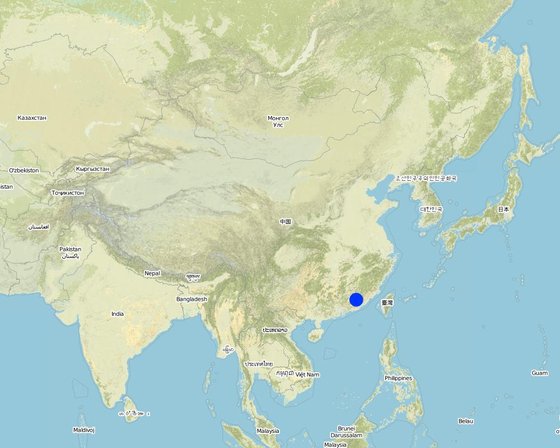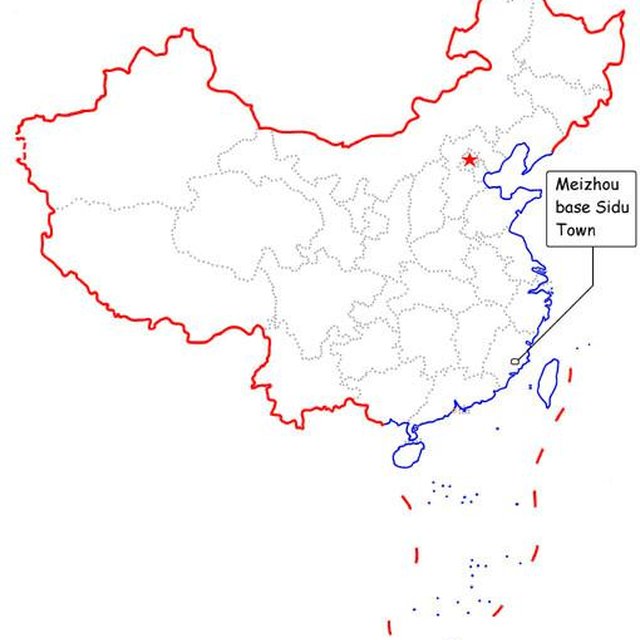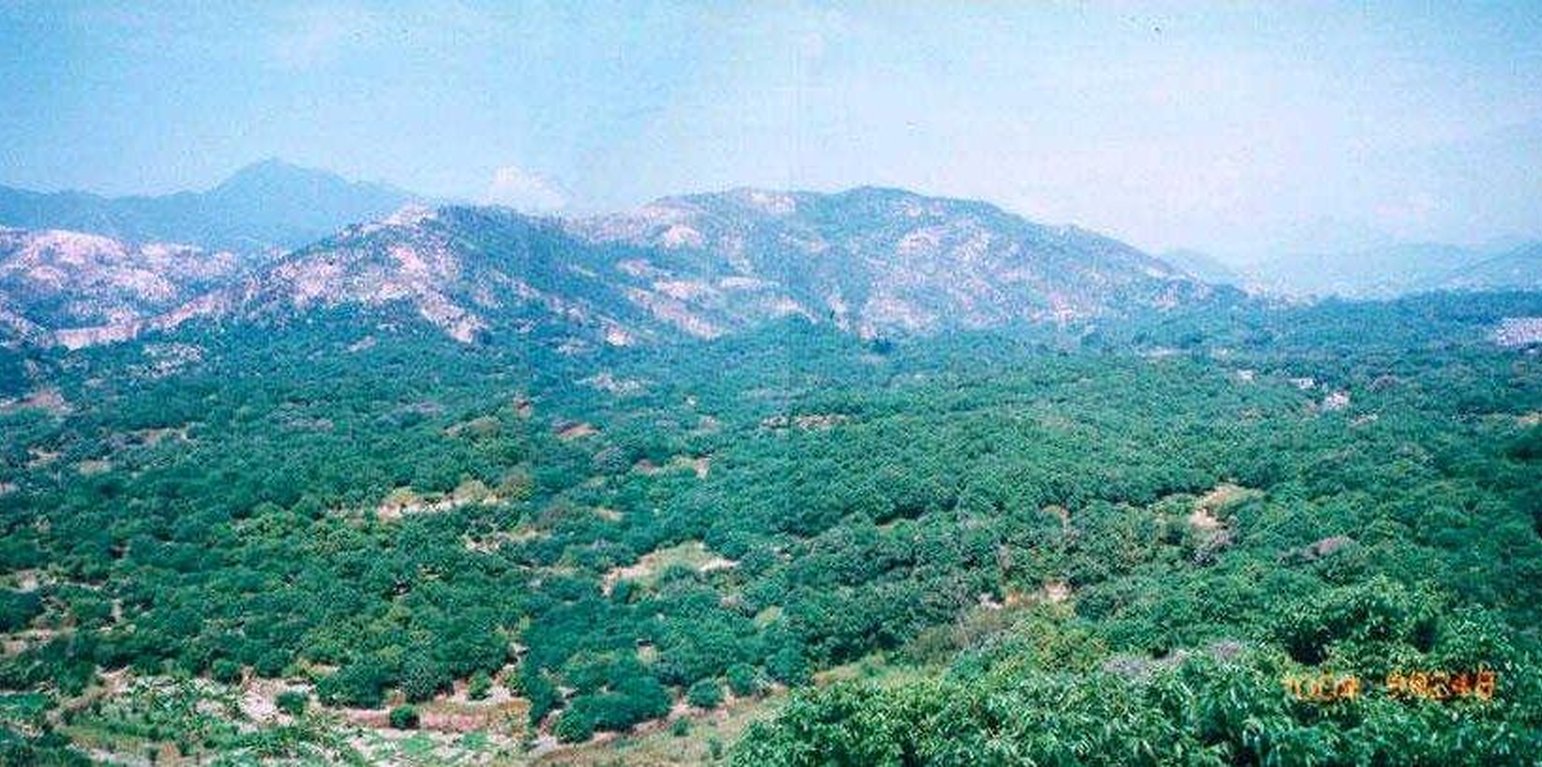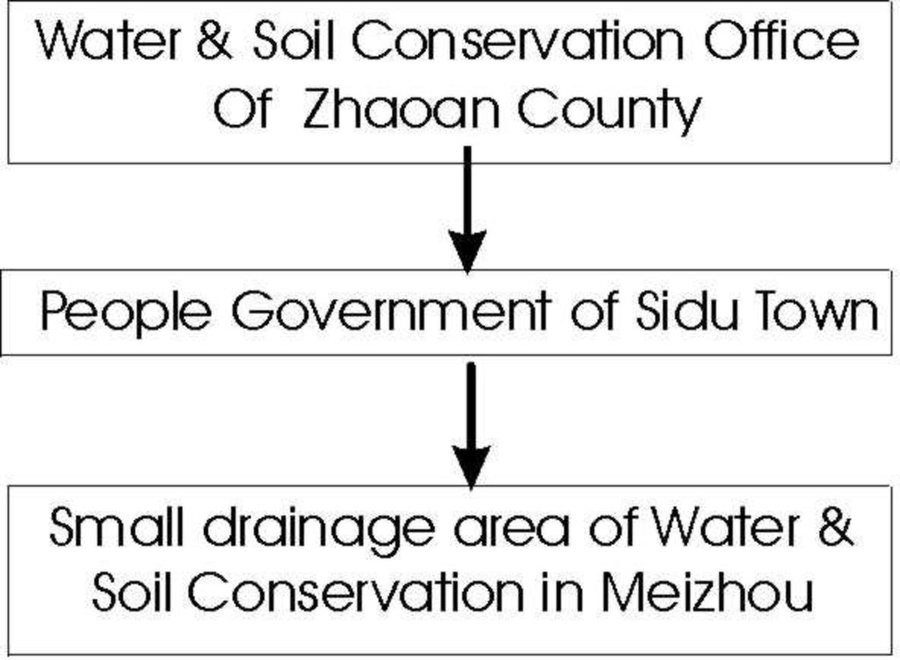Interplanting fruit trees of Longan, Peach, Plum etc.
(China)
Description
Interplanting plum, peach and other fruit trees in longan orchard on level terraces in order to prevent soil and water loss and improve production of the fruit trees.
The objectives of the approach is to interplant fruit trees in orchard so as to prevent water loss and soil erosion. The specific targets are to build the slope land in the hilly and mountain areas into terraces and plant trees in order to improve surface vegetation cover rate and reduce water and soil loss; to harvest surplus rainfall in the raining season and irrigate the fruit trees in dry seasons. To implement the project, local government gave financial support and SWC specialists gave technologically guide to local land users.
Location

Location: Fujian, China
Geo-reference of selected sites
Initiation date: 1984
Year of termination: n.a.
Type of Approach
-
traditional/ indigenous
-
recent local initiative/ innovative
-
project/ programme based

Related location of the interplanting in orchard in Sidu town.
Approach aims and enabling environment
Main aims / objectives of the approach
The main aims are to lead the land users to develop waste mountain areas and plant fruit trees in order to add farmers' income. The SLM Approach addressed the following problems: To strengthen the management in the area of serious water loss and soil erosion, consummate the SWC measures and mobilize enthusiasm of the land users in SWC.
Conditions enabling the implementation of the Technology/ ies applied under the Approach
-
Legal framework (land tenure, land and water use rights): The existing land ownership, land use rights / water rights greatly helped the approach implementation: Separation between ownership and usufruct of land, to great extent, enhances the land users' enthusiasm of SWC investment.
Conditions hindering the implementation of the Technology/ ies applied under the Approach
-
Availability/ access to financial resources and services: lack of capital causing the farmers' unwillingness to invest much.
Treatment through the SLM Approach: Raising fund from variable channels and government constructing infrastructure beforehand.
-
Knowledge about SLM, access to technical support: Lack of specific technicians, practical experience is not enough.
Treatment through the SLM Approach: Traning specific technicians, propagandizing the techniques.
Participation and roles of stakeholders involved
Stakeholders involved in the Approach and their roles
| What stakeholders / implementing bodies were involved in the Approach? |
Specify stakeholders |
Describe roles of stakeholders |
| local land users/ local communities |
Working land users were work equally divided between men and women (The manner of community is in favor of investment in water & soil conservation as well as save the total cost.) |
|
| SLM specialists/ agricultural advisers |
|
|
| national government (planners, decision-makers) |
water & soil conservation departments |
|
| National specialists |
|
|
Involvement of local land users/ local communities in the different phases of the Approach
none
passive
external support
interactive
self-mobilization
initiation/ motivation
Public meetings; Convening the public meeting for the delegates and cadres in the village committees.
planning
Public meetings; Consulting the concrete imbursement of the measures from governments and dividing the lands to plant.
implementation
Responsibility for major steps; Taking a lot of time to level off lands, build and repair terraces as well as improve soil fertility.
monitoring/ evaluation
Mainly: Reporting; partly: Interviews/questionnaires; Land users report the results for higher-up administrative sections and exchange experience as well as popularize good method.
Research
on-station; Mainly investigating the effects of the SWC, studying good methods from others.
Flow chart
Procedure of the implememtation of the SWC approach.
Decision-making on the selection of SLM Technology
Decisions were taken by
-
land users alone (self-initiative)
-
mainly land users, supported by SLM specialists
-
all relevant actors, as part of a participatory approach
-
mainly SLM specialists, following consultation with land users
-
SLM specialists alone
-
politicians/ leaders
Decisions were made based on
-
evaluation of well-documented SLM knowledge (evidence-based decision-making)
-
research findings
-
personal experience and opinions (undocumented)
Technical support, capacity building, and knowledge management
The following activities or services have been part of the approach
-
Capacity building/ training
-
Advisory service
-
Institution strengthening (organizational development)
-
Monitoring and evaluation
-
Research
Capacity building/ training
Training was provided to the following stakeholders
-
land users
-
field staff/ advisers
-
Extensionists/trainers (2), SWC specialists (1)
Form of training
-
on-the-job
-
farmer-to-farmer
-
demonstration areas
-
public meetings
-
courses
-
Farm visits
Subjects covered
How to fertilize and manage fruit trees.
Advisory service
Advisory service was provided
-
on land users' fields
-
at permanent centres
Name of method used for advisory service: Interplanting in orchard; Key elements: interplanting, fruit trees, management; 1) Extension staff: Mainly government employees 2) Target groups for extension: Land users; Activities: Carrying out technic training
Advisory service is quite adequate to ensure the continuation of land conservation activities; Mainly inducting the land users to plantation according to market needs so as to maintain the development of agricultural economy. Some aspects have to be improved.
Institution strengthening
Institutions have been strengthened / established
-
no
-
yes, a little
-
yes, moderately
-
yes, greatly
Describe institution, roles and responsibilities, members, etc.
Type of support
-
financial
-
capacity building/ training
-
equipment
Further details
Monitoring and evaluation
bio-physical aspects were ad hoc monitored through measurements
technical aspects were regular monitored through measurements
socio-cultural aspects were ad hoc monitored through observations
economic / production aspects were ad hoc monitored through measurements
area treated aspects were regular monitored through measurements
land users involved aspects were ad hoc monitored through observations
management of Approach aspects were regular monitored through observations
There were few changes in the Approach as a result of monitoring and evaluation: From the observation and evaluation, the shortcoming could be found and remedied.
Research
Research treated the following topics
-
sociology
-
economics / marketing
-
ecology
-
technology
Research was carried out on-farm
Financing and external material support
Annual budget in USD for the SLM component
-
< 2,000
-
2,000-10,000
-
10,000-100,000
-
100,000-1,000,000
-
> 1,000,000
Precise annual budget: n.a.
Approach costs were met by the following donors: government (national - state): 80.0%; other (land users): 20.0%
The following services or incentives have been provided to land users
-
Financial/ material support provided to land users
-
Subsidies for specific inputs
-
Credit
-
Other incentives or instruments
Financial/ material support provided to land users
partly financed
fully financed
equipment: tools
hand tools
agricultural: seeds
seedlings
agricultural: seeds: fertilizers
Labour by land users was
-
voluntary
-
food-for-work
-
paid in cash
-
rewarded with other material support
Credit
-
Conditions: Interest rate charged: 0.74%, Interest was lower than market rate.
-
Credit providers: n.a.
-
Credit receivers: The rich easily obtain credit.
Impact analysis and concluding statements
Impacts of the Approach
No
Yes, little
Yes, moderately
Yes, greatly
Did the Approach help land users to implement and maintain SLM Technologies?
Changing the land use pattern and obtain higher benefits from the SWC input.
Did the Approach improve issues of land tenure/ user rights that hindered implementation of SLM Technologies?
By the project implementation of national or local government, some subsidies can make up for the obstacle.
The problem is likely to be overcome in the near future. Along with the land users' recognizant enhance of SWC, the conflict between land ownership and use right could be minimized.
Did other land users / projects adopt the Approach?
Development of the woodland also adopts the approach of water & soil conservation.
Main motivation of land users to implement SLM
Sustainability of Approach activities
Can the land users sustain what hat been implemented through the Approach (without external support)?
Conclusions and lessons learnt
Strengths: land user's view
-
Increasing fruit tree yield and income (How to sustain/ enhance this strength: Collecting information and planting the species that market need.)
Strengths: compiler’s or other key resource person’s view
-
Increasing farmers' income and improving the locals living standard. (How to sustain/ enhance this strength: Enlarging planting areas.)
-
Developing the waste mountain and hilly areas and recovering environment. (How to sustain/ enhance this strength: Scientifically planning and implementing.)
-
Enhance of land users' SWC consciousness. (How to sustain/ enhance this strength: Training and demonstration.)
Weaknesses/ disadvantages/ risks: land user's viewhow to overcome
Weaknesses/ disadvantages/ risks: compiler’s or other key resource person’s viewhow to overcome
-
Much more input at the beginning.
Subsidy.
References
Date of documentation: Dec. 31, 2008
Last update: July 12, 2017
Resource persons
-
zhangsheng LIU (fjstb@public.fz.fj.cn) - SLM specialist
-
Degong Zhang - SLM specialist
Full description in the WOCAT database
Documentation was faciliated by
Institution
- Water & Soil Conservation Office of Zhaoan County (Water & Soil Conservation Office of Zhaoan County) - China
Project






